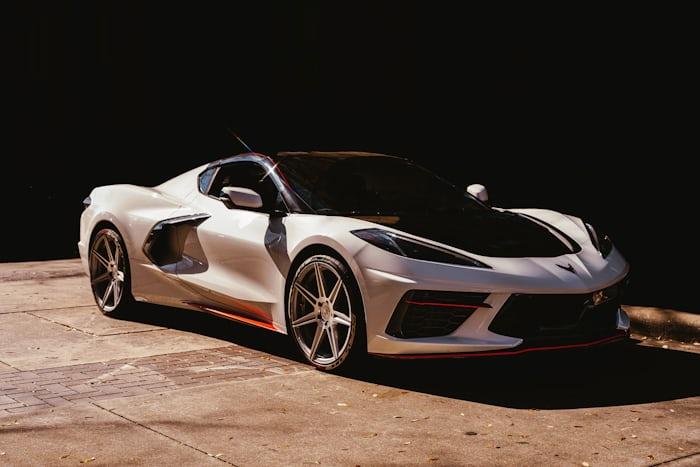Transparent roofs—often called panoramic sunroofs or moonroofs—feel like a little slice of sky in your car. They bring warmth, openness, and a special kind of joy to the driving experience. But behind that seamless pane of glass lies a lot of engineering muscle, careful design choices, and ongoing innovation to keep you safe on the road.
Here are five human-centered insights into why these see-through roofs hold up under daily use and how they stay resilient in extreme conditions.
1. Ingenious Layering for Strength and Peace of Mind
When you look up through a C8 transparent roof, it may surprise you to know it’s not just one slab of glass. Manufacturers build it like a high-tech sandwich: multiple thin layers of glass bonded with a resilient plastic film in between. If a stray stone or hail hits it, any cracks will spider-web across the surface, but the plastic layer holds everything together.
You won’t get a shower of shards if the roof is struck; instead, you see a spiderweb pattern that keeps the glass in place. Some high-end systems even add an extra tempered layer on top—one that crumbles into small, harmless pebbles—so you end up with the best of both worlds: resistance to breakage and protection from sharp fragments. It’s like wearing two helmets at once.
2. Reinforcing the Frame to Handle Rollovers
It’s natural to worry: if you cut a big hole in the roof, won’t you weaken your car? The answer lies in clever metalwork around the glass—think of the A-, B-, and C-pillars (those vertical supports by the doors and rear). Automakers use ultra-high-strength steel or even exotic aluminum alloys in these pillars, often beefing them up with additional braces. When you slam on the brakes or, worst case, roll over, that reinforced metal takes on the heavy loads, guiding forces around the glass rather than through it. Engineers use computer simulations to fine-tune where the metal should be thickest, and crash-test rigs push down on the roofs with more than a ton of force. Time and again, cars with panoramic roofs withstand these tests just as well as solid-metal roofs, so you get that open-air feeling without compromising your protection.
3. Precision-Calibrated Impact Performance
Road life throws all kinds of hazards at your windscreen—and your roof. From stray gravel kicked up by trucks to rogue tree branches in a storm, glass roofs are built to endure. During development, engineers simulate impacts by dropping or firing weighted balls at the glass to mimic real-world strikes. The goal is twofold: the glass should crack in a controlled pattern rather than shatter explosively, and the surrounding frame must stay rigid enough to keep the cabin intact. Too flexible, and the roof might flex inward toward your head; too rigid, and a hard hit could send shards flying. By adjusting glass thickness, the properties of that plastic interlayer, and the way the panel sits in its frame, designers strike a balance that soaks up energy while preserving headroom and safety.
4. Weatherproofing and Everyday Upkeep
A glass roof is a window to the weather—sunshine, rain, snow, and everything in between. That openness comes with a bit more upkeep than a traditional roof. Over time, seals and gaskets around the glass can wear or collect dirt, and tiny drainage channels under the headliner can get clogged with leaves or road grime.
Water can’t pool around the edges, so automakers hide little troughs and tubes beneath the lining that funnel moisture out to the rocker panels or wheel wells. Still, every few months it’s wise to sweep out debris from the tracks and give the seals a wipe-down with a mild, non-abrasive cleaner. If you skip this basic chore, you might notice drips or a damp musty smell over the years. A little preventive care goes a long way toward keeping the cabin dry and your panoramic view crystal clear.
5. Emerging Technologies That Will Blow Your Mind
If the current generation of transparent roofs seems impressive, just wait. “Smart” electrochromic glass can shift from clear to tinted at the touch of a button, trimming glare and heat without fussing with bulky sliding shades. Some models let you dial in just the right level of tint with a smartphone app—perfect for those midday sun-scorched commutes. Beyond that, solar-integrated roofs are on the rise: transparent photovoltaic cells embedded in the glass can trickle-charge your car’s battery or power ventilation fans when you park in the sun, keeping the cabin cooler.
And researchers are tinkering with self-healing polymers in the interlayer—imagine a tiny scratch sealing itself over time, like nothing ever happened. In the not-too-distant future, roofs will get lighter, tougher, and more versatile, all while letting in as much—or as little—light as you want.
Bringing It All Together
At first glance, a panoramic roof might seem like a pure luxury, a way to catch a glimpse of the sky on your commute. But the real magic is how much thought and care goes into making it both delightful and dependable. From laminated, multi-layer glass that stops shards in their tracks, to reinforced pillars that brace every curve and bump, to drainage systems that quietly whisk away rain, these roofs are engineered for everyday life. And as we embrace smart glazing, solar cells, and materials that can heal themselves, that slice of sky above your head will only get more resilient—and rewarding—to every driver who looks up and smiles.


